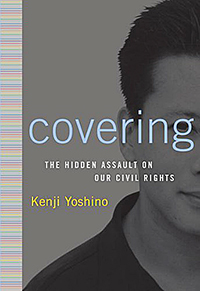
The 2014 selection of the First Year Reading Program is “Covering: The Hidden Assault on Our Civil Rights” by Kenji Yoshino, JD, a New York University law professor. Both a poetic memoir and a powerful legal analysis, “Covering” argues that all of us “cover,” i.e. downplay traits society frowns upon, to better blend into the mainstream. Yoshino, who reflects on his identity as a gay academic and an Asian American, argues covering diminishes both our personal dignity and our shared civil rights.
Jill Stratton, PhD, associate dean of students at Washington University in St. Louis, said Yoshino’s message will resonate with incoming first-year students as they explore their own identities. Students will read “Covering” this summer and then discuss it in small groups during orientation.
“The discussability of the book is something the committee really looks at,” said Stratton, who was part of a group of students, faculty and staff who chose the book. “The touch point of this book is this idea of covering, but he talks about it in so many ways that I think everyone will connect with.”
Staff members also are invited to read “Covering.” Fifteen discussion groups of up to 20 employees will meet throughout the summer either during lunch or after work.
Prior to joining New York University, Yoshino served as deputy dean at Yale Law School, where he also earned his law degree. Yoshino studied as an undergraduate at Harvard and was named a Rhodes Scholar in 1993. Yoshino also is author of “A Thousand Times More Fair: What Shakespeare’s Plays Teach Us About Justice.”
“Covering” was widely praised after its release in 2006. The book won the Randy Shilts Award for Gay Non-Fiction in 2007 and won positive reviews from publications ranging from American Lawyer to O magazine.
“Yoshino offers his personal search for authenticity as an encouragement for everyone to think deeply about the ways in which all of us have covered our true selves,” The New York Times wrote in 2006. “And he presents his story and weaves in the legal cases in such an engaging way that we really do feel newly inspired.”